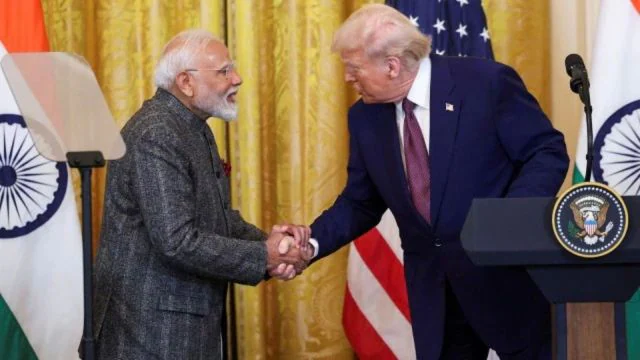Union Budget 2025: CBIC has been taking steps to digitise the compliance processes such as broad-basing e-invoicing and Invoice Management System (IMS) for credits under GST, and promoting faceless assessment.
The Union Budget for the fiscal year 2025-26 holds particular importance as the government seeks to address key economic challenges and unlock growth opportunities by strengthening the manufacturing sector, enhance exports, and simplify trade-related processes. The key focus is to encourage businesses to embrace the “Make in India” initiative while ensuring seamless integration with global value chains. This approach will aim to attract global players to establish operations in India, responding to the evolving geopolitical dynamics.
There has also been a concerted effort to restructure the tariff structure, particularly import duties, on raw materials and capital goods vital for domestic manufacturing, as well as for rationalising the Goods and Services Tax (GST) rate structure to simplify the system and reduce disputes. In addition, the government has been implementing non-tariff measures such as licensing requirements and mandatory compliances to enhance quality and compliance standards, which have often been perceived as barriers to international trade. Furthermore, the Central Board of Indirect Taxes (CBIC) has been taking steps to digitise the compliance processes such as broad-basing e-invoicing and Invoice Management System (IMS) for credits under GST, promoting faceless assessment, and introducting electronic credit ledger for Customs duty payment, all aimed to improve trade facilitation and enhance the ease of doing business.
GST rate rationalisation
The government has initiated steps to rationalise the multiple rate structure in GST, mainly to alleviate the challenges that businesses and consumers face. A GST rate rationalisation committee under the Group of Ministers has been set up by the GST Council to reduce classification-related disputes, eliminate credit chain disruptions, address duty inversions, and to expand the tax base. While numerous deliberations have been undertaken on the rate structure, yet a formal submission of the Committee’s report on rate rationalisation has been delayed.
Given the complexity of the process, careful deliberation is required to prevent unintended consequences, balance revenue objectives while simplifying the current four-tier rate structure. Moreover, addressing tax inversions, especially in sectors such as textiles and fertilisers, demands careful examination. While the government has made significant progress in digitising GST compliance, which helps expand the tax base, increases revenue and facilitates ease of doing business, it is essential to set clear timelines to achieve the goal of rate rationalisation.
Customs dispute resolution and need for amnesty
The government could look at resolving protracted litigation, easing the strain on the judicial system, and unlocking working capital for businesses involved in Customs-related disputes. Numerous Customs issues are pending before various forums, involving substantial duties. This not only results in working capital blockages through pre-deposits or duty payments made under protest but also ties up funds in bank guarantees. In April 2023, amnesty schemes for closure of cases of default in export obligation (EO) under the Advance Authorisation (AA) and Export Promotion Capital Goods (EPCG) have also eased genuine hardship faced by industry. An amnesty scheme for Customs would be highly beneficial, as the industry has long been waiting for such a scheme to address pending litigation matters.
Despite the advancements in the Customs procedures through the use of technology and the implementation of faceless assessments, the dispute resolution process remains offline. There is a need for a digital platform to handle Customs litigation. Additionally, there is a need to integrate the platforms for compliance under both the Customs and Foreign Trade Policy (FTP), which are currently managed separately by different ministries (the Ministry of Finance and the Ministry of Commerce).
IGST and compensation cess deferment under Manufacturing in Customs Bonded Warehouse (MOOWR) scheme is one of the most promising initiatives, providing impetus to domestic manufacturing by offering deferment of duty applicable on inputs as well as capital goods at the time of import. However, the Finance Act 2023 made a crucial amendment to the MOOWR scheme by removing the upfront exemption of IGST and compensation cess on imports. Although IGST and compensation cess are creditable, upfront payment of IGST impacts the working capital of businesses. While the Section has not been notified yet, industry is hopeful that the government will keep the implementation of the proposal in abeyance, in order to encourage manufacturing initiatives under this scheme.
Confidentiality in inter-unit MOOWR transfers
The CBIC has issued guidelines for transferring goods between MOOWR units, ensuring that both dispatching and receiving warehouse licensees accurately record the goods transferred, including dutiable items and the corresponding duty amount. This ensures that the duty liability remains intact until the goods are cleared for home consumption. However, the current provisions, which mandate the disclosure of the initial import value when transferring goods between MOOWR units, can lead to the revelation of price-sensitive information. This is detrimental to business confidentiality. Therefore, it appears to be necessary to limit disclosures to only the deferred duty amount rather than the value of imported goods in the resultant product. From a procedural aspect, it is suggested that the duty forgone amount may be disclosed at each MOOWR-to-MOOWR inter-unit transfer of resultant products. The MOOWR unit that ultimately clears the goods into the domestic market should be responsible for paying this amount.
Time-bound SVB Investigations
Cumbersome and time-consuming Special Valuation Bench (SVB) investigations related to transactions between related parties under Customs have resulted in a significant backlog of cases with SVB cells. Furthermore, all import assessments are kept provisional by default in such cases, leading to considerable uncertainty regarding the financial liability for Customs duties. Perhaps the SVB Circular could be amended to state that if investigations are not completed within two years (the maximum permissible period for the completion of first-level adjudications), provisional assessments should automatically be deemed finalised.
Conclusion
India has the opportunity to capitalise on the momentum by focusing on trade facilitation, supporting the manufacturing ecosystem, and promoting ease of doing business. Additionally, strengthening trade relations and exploring new markets through free trade agreements, including regional agreements can foster greater cooperation, boost trade, and lower tariff burdens. Advancing the value chain through technology-driven exports, e-commerce, digital trade, and advanced electronics, alongside ensuring clarity in tax policies by building on recent reforms, benefits and concessions for sustaining the “Make in India” initiative, will be crucial. The Budget announcements will play a vital role in shaping the roadmap.



